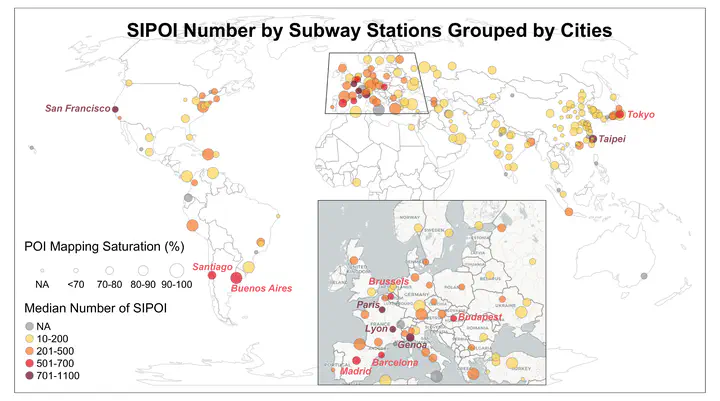Where Does Social Infrastructure Exist Near Subway Stations? A Global Assessment Using OpenStreetMap Data
 Cities around the world that have a high median number of social infrastructure points of interest (SIPOIs) around subway stations.
Cities around the world that have a high median number of social infrastructure points of interest (SIPOIs) around subway stations.(In Progress, Leading author)
This work is developed with Dr. Clio Andris, Dr. Filip Biljecki, and my RA Qifan Wu
Abstract
Social infrastructure (i.e., third places) and subway stations play crucial roles in sup- porting social connections and transit flows in cities. In certain regions, such as China, Singapore, and Japan, subway station developments are highly sought after, presenting op- portunities for vibrant third places to thrive. Some cultural anthropology scholars even view subway stations as public spaces for social interactions and windows to observe ev- eryday life experiences. Conversely, some subway stations find themselves in underdeveloped areas, surrounded by vast parking lots.
In this study, we ask two research questions:
- Where does social infrastructure exist near subway stations?
- How do built environment factors (e.g., population density, building area,road length, and car-oriented infrastructure) affect colocation patterns?
We are currently developing a cool web map tool that allows exploration and download of social infrastructure POI around subway stations around the world.
Keywords: Subway Station; Social Infrastructure; OpenStreetMap
The draft manuscript is available for view as Chapter 3 in Xiaofan Liang’s PhD Dissertation.